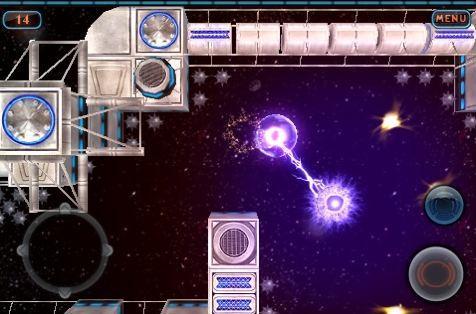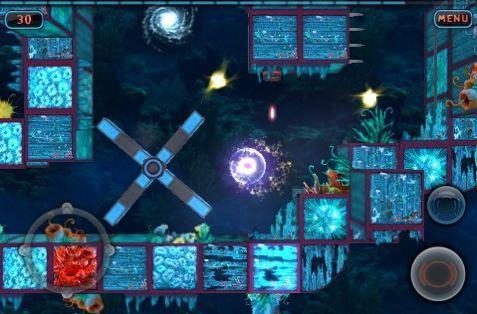- Wondering how to get Monopoly GO! free rolls? Well, you’ve come to the right place. In this guide, we provide you with a bunch of tips and tricks to get some free rolls for the hit new mobile game. We’ll …
Best Roblox Horror Games to Play Right Now – Updated Weekly
By Adele Wilson
Our Best Roblox Horror Games guide features the scariest and most creative experiences to play right now on the platform!The BEST Roblox Games of The Week – Games You Need To Play!
By Sho Roberts
Our feature shares our pick for the Best Roblox Games of the week! With our feature, we guarantee you'll find something new to play!All Grades in Type Soul – Each Race Explained
By Adele Wilson
Our All Grades in Type Soul guide lists every grade in the game for all races, including how to increase your grade quickly!
Ozone Review
“Can a game be art?” asks the App Store listing for Ozone. The answer, of course, is yes. But not as long as game makers consider Rococo filigree, overwrought ambience fit for a transcendental meditation class, and arbitrary barriers to fun as prerequisites for art. This is billed as an abstract platformer that asks you to think hard about your actions while you react and encourages you to absorb the pleasures of ornate audiovisual beauty while you play. That’s a tall order for an iPhone game that the designers of Ozone just aren’t equipped to fulfill.

“Can a game be art?” asks the App Store listing for Ozone. The answer, of course, is yes. But not as long as game makers consider Rococo filigree, overwrought ambience fit for a transcendental meditation class, and arbitrary barriers to fun as prerequisites for art. This is billed as an abstract platformer that asks you to think hard about your actions while you react and encourages you to absorb the pleasures of ornate audiovisual beauty while you play. That’s a tall order for an iPhone game that the designers of Ozone just aren’t equipped to fulfill.
You can’t fault the game for being earnest. The tutorial takes its time explaining each of the game’s mechanics. You control a glowing ball that floats in the direction you tap the controls. It propels itself by releasing air from its own body, which makes it smaller in size and brings it closer to an explosive death. Movement thus becomes a matter of economy, a gameplay element in and of itself. (You can refresh the ball on spinning fans strewn throughout the levels.) The ball bounces off the walls at an angle and a speed dependent on how much momentum it had when it collided, so you’re encouraged to think about how to use the walls to indirectly steer the ball and thus save air. You also have a brake button that stops the ball cold, and a deflate button that shrinks the ball to fit through small openings. Your goal is to collect all the glowing yellow orbs in each level, which opens the exit portal.

The levels are dangerous, and you need to practice shooting the gaseous ball across corridors and into rooms without getting hurt by things like giant iron spikes that pop out of the walls, turrets that fire plasma blasts at you, and spinning razor wheels of steel that chase you around. Movement is not only a matter of economy but a test of your skill and precision. To compensate, the game gives you pickups that turn your avatar into a steel wrecking ball, or a ball of chain lightning that automatically shocks nearby enemies. One pickup arms your ball with a plasma gun. The plasma is fired in the direction that your ball is currently traveling, and the shots also bounce off the walls at various angles. This presumably makes shooting a bit more thoughtful and puzzle-like than the shooting you perform in less-artistic games.
Oh, and when you touch the very pretty walls, they emit a chime.
Ideally, Ozone would have been an interesting hybrid of Osmos, a PC indie game centered on moving gaseous blobs without killing them; and Prince of Persia, a PC game in which you try to avoid being impaled on rusty metal objects. There’s a stark contrast between the bioluminescent organism that you control and the industrial objects that it needs to avoid. But these spikes and buzzsaws and guns just come off as trite and incongruous enemies, suggesting that the game lacks careful thought in general.
For instance, there are rarely moments where the level design encourages you to move the ball by bouncing it off the walls—even though the tutorial insists that putting your mind to the technique will open up possibilities. Ditto for purposely deflating the ball to fit into small spaces. The levels consist largely of big rooms linked by narrow hallways, with yellow orbs and pickups stuck in the far corners and dangerous spikes dotting the walls. They also do a poor job of letting you intuit which way to go. There are plenty of forks in the road in which one path definitely needs to be visited before the other. A mini-map giving you a broader view of the terrain would have been a big help here.

It’s as if much more time was spent imagining how tricky it would be to move the ball than on how the environments would invite such trickery by the player. Usually you’ll jet straight to the ends of hallways and each of the corners of a room, braking hard and grabbing all the items. Likewise, when firing the plasma gun you’ll simply pepper the area with shots in haphazard directions, rather than figuring out how to perfectly align your ball’s movement and aim. Instead of feeling like a nuanced puzzle, Ozone comes off like a very conventional game whose avatar needs extra help getting around.
The levels are also filled with cheap traps—like hard-to-avoid gusts of wind that blow your ball around pointlessly and cause you to waste air, and speed arrows that shoot your ball straight into a bed of spikes. It’s as if Ozone can’t decide whether it wants to be a twitch game or a puzzle game. A boss must be defeated at the end of each of the four themed areas. The very first boss presents a major spike in difficulty, and its attack patterns make zero use of the ball’s movement and shooting mechanics. Is Ozone an action game? If you pay attention to the sound the walls make when touched, they make ascending scales. Is Ozone a music game?
Ozone is filled to the brim with complicated trappings—musical surfaces, unintuitive and double-edged controls, a painterly New Age aesthetic—that don’t work together in any thoughtful way and often actively work against each other. They’re art-like features that each try to make a case for the game being art, but they only make the game less and less fun as you progress. There’s a line of thought that argues that bad games are closer to art than games that simply do a good job of being fun. But unfortunately, Ozone isn’t a spectacular failure. It’s just a very pretty game that’s also pretty forgettable.

The good

The bad
More articles...
Monopoly GO! Free Rolls – Links For Free Dice
By Glen Fox
Wondering how to get Monopoly GO! free rolls? Well, you’ve come to the right place. In this guide, we provide you with a bunch of tips and tricks to get some free rolls for the hit new mobile game. We’ll …Best Roblox Horror Games to Play Right Now – Updated Weekly
By Adele Wilson
Our Best Roblox Horror Games guide features the scariest and most creative experiences to play right now on the platform!The BEST Roblox Games of The Week – Games You Need To Play!
By Sho Roberts
Our feature shares our pick for the Best Roblox Games of the week! With our feature, we guarantee you'll find something new to play!All Grades in Type Soul – Each Race Explained
By Adele Wilson
Our All Grades in Type Soul guide lists every grade in the game for all races, including how to increase your grade quickly!







